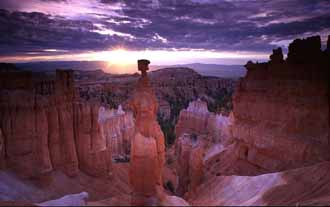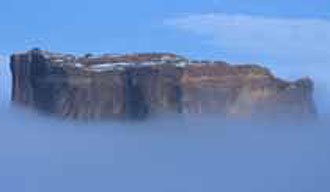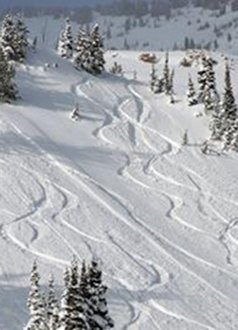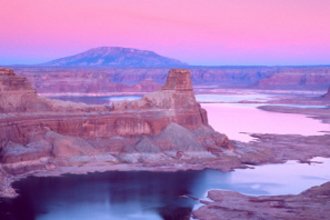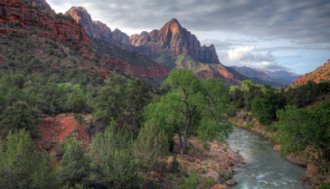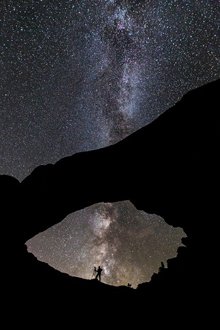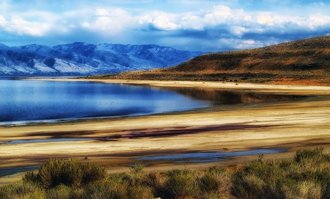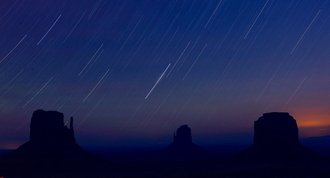That You Were Never The Same?
Ghost Towns In Utah
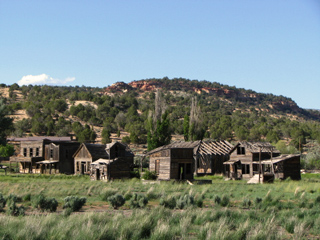
Why would I include a page about ghost towns in Utah on this site? Well … for one thing … they are an integral part of the state’s history. And no matter where you go in Utah, you’re likely to come across a “ghost town”.
Most people who think of a ghost town … at least I do … relate them to old mining camps. When the ore ran out, so did the residents. And since mining played such an intrinsic role in the state’s history, many of them fall into this category.
When you read a little about Park City History, you’ll see that silver mining enticed a diverse and colorful mix of people … like a magnet … to the area. But after the silver ran out, even Park City exhibited some of the characteristics of a ghost town.
Park City was even listed in a 1951 book Ghost Towns of the West. It prompted the town mayor at that time ... Will Sullivan ... to state that “there were still 1,150 of us live ghosts around then.” Of course, getting into the ski business changed all that.
Not All Mining Towns
Many of the ghost towns in Utah were actually agricultural towns. Water … usually lack of it … was the main reason they were abandoned.
Some, though, were literally washed away by floods. That's not too difficult to visualize if you’ve lived here for any length of time.
Most of the state … and early territory … of Utah was colonized by the early Mormon pioneers. Shortly after the Salt Lake Valley was settled in 1947, many families were called to move out and establish residency throughout the territory.
Many of these settlements were poorly planned and ill-fated. even so, many grew and flourished. This continues to provide us with so much of the colorful rural flavor still prevalent throughout the state.
What Is Considered A Ghost Town in Utah?
Dictionary.com says a ghost is a mere shadow or semblance; a trace. That’s what a ghost town is. It doesn’t mean it has to be totally “dead”. It may still be an active town but just a shadow of what it once was.
Some of these towns may still even be quite active. Of course residents may not like seeing their town referred to as a ghost town. Even so, towns with big declines in population and activity do fall into the definition of a ghost town.
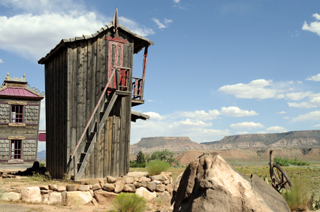
Perhaps a school is left. Or a church. Maybe even a post office. There might be assorted other government buildings.
Now not all ghost towns meet the above criteria. A small mining camp built around a hole dug in the ground … and there are many of these in Utah … can’t be classified as a town. But many ghost towns in Utah are literally the remains of camp with some boards strewn around the site.
Under the above criteria, there may be as many as 150 ghost towns in Utah.
How To Classify Ghost Towns
Type:
- Mining towns – established because of mining operations. Miners of 100-150 years ago lived close to the mine. Utah miners dug for silver, copper, coal, lead, zinc, and tungsten.
- Agricultural towns - the most numerous type. Almost all were established during the initial colonization period by members of the Mormon Church.
- Railroad towns - established as the Transcontinental Railroad was built. Hundreds of temporary camps were set up along the way. Some actually developed into permanent settlements.
- Miscellaneous types - towns whose origins don’t fall into one of the above three types.
Class:
- No trace exists. Completely disappeared.
- A small remnant remains. A little bit of brick or stone. Perhaps a tiny cemetery.
- Significant ruins remain but nothing intact. Maybe a pile of old lumber or fallen-down buildings.
- Uninhabited towns but intact buildings remain among the fallen ruins.
- Old uninhabited ruins lie near newer and occupied homes and farms.
- Entire towns with many old abandoned buildings. There may be a few with residents still living in them.
- Full of deserted buildings and relics but many people still live there albeit at greatly reduced levels from their peak. Probably better referred to … along with the one just above … as semi-ghost towns.
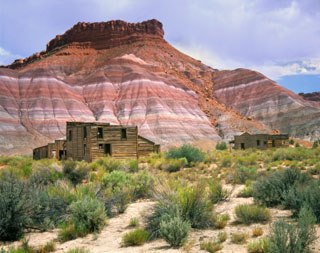
Take Nothing But Photographs
Leave Nothing but Footprints
The above quote is from Stephen L. Carr’s book, The Historical Guide To Utah Ghost Towns published in 1971. Like our natural wonders, tread lightly if you happen to visit one of these ghost towns in Utah.
People do ridiculous things far too often. Whether it is taking a relic from a protected ancient native American site. Or knocking a piece of wood from an old historical building for a souvenir. It is the same thing. It is theft and it is wrong!
Take photos. Paint a picture. Look all you want. But take nothing else. Leave nothing else.
Links to Ghost Towns in Utah
As I add individual pages for various ghost towns in Utah, I’ll add links below. Please click on the ones which interest you.
1. Camp Floyd/Fairfield - The Ghosts of Camp Floyd & Fairfield
2. Eureka
3. Frisco
4. Grafton
5. Mercur
6. Midlake - The Town in the MIddle of the Great Salt Lake
7. Ophir
8. Thistle
Have A Great Story About Ghost Towns in Utah?
Do you have a great story about ghost towns in Utah? Maybe a comment. Or a question? Please share it here!


